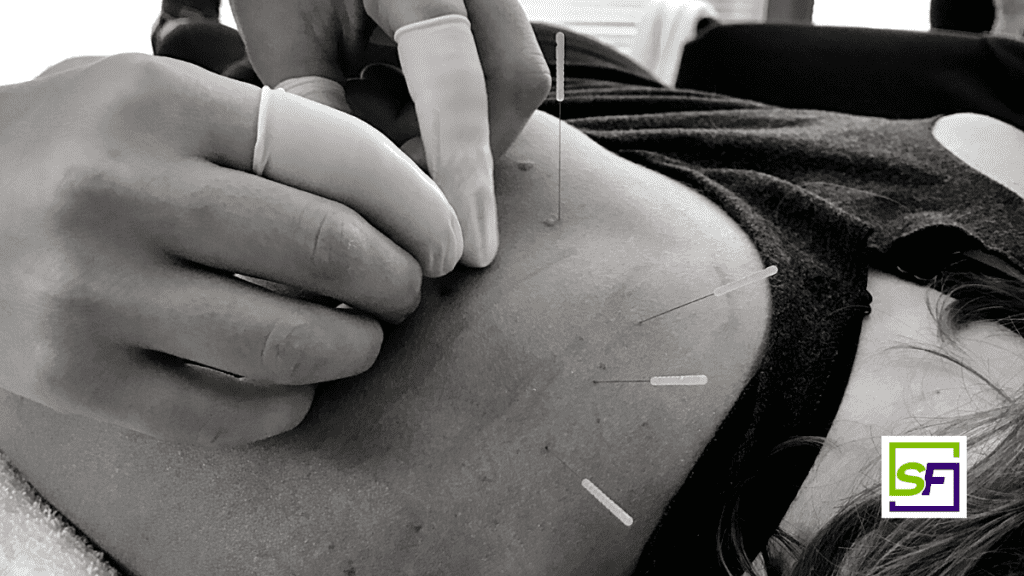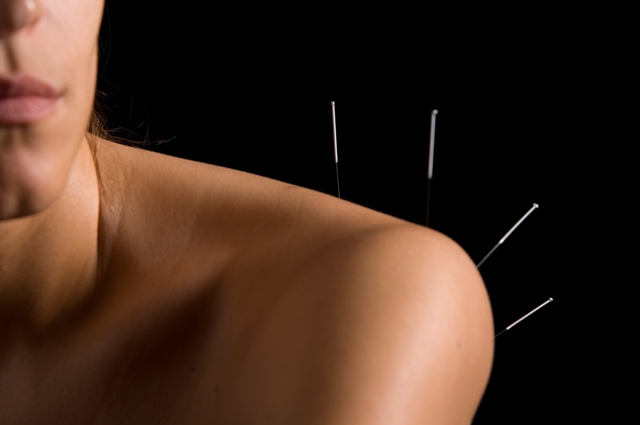Superficial vs. Deep: Does it matter when dry needling?
Dry needling is a commonly used intervention for the management of various painful conditions. Pain conditions can manifest in many forms. However, pain management is a common treatment goal when dry needling. The physiologic mechanisms at play, mechanisms of pain relief, and the overall efficacy of dry needling have been discussed in the literature extensively over the last decade.1–4 More recent studies of dry needling have elicited more information on the dosing necessary for dry needling effectiveness. Much of this is related to the study of the depth of needle penetration and its impact on pain.
What is the difference between Superficial and Deep lesions?
Dry needling can be performed at various depths. superficial dry needling (SDN) involves inserting a needle at a depth that is into the subcutaneous tissue and may be combined with manipulation of the needle while in situ. Some of the benefits of needling this way include less risk of significant tissue trauma, reduced risk of nerve or visceral injury, and patient comfort.5 Deep dry needling (DDN) involves inserting a needle through the skin, beyond subcutaneous tissue, and into muscular or other connective tissue structures and can also be combined with needle manipulation. Many have questioned the use of deep needle penetration as it has not consistently demonstrated superior results in pain management compared to superficial needle insertion in some studies. 6–8 This has led to several studies comparing superficial vs. deep dry needling.5,8–12 These articles are starting to demonstrate a common trend when it comes to the depth of the lesion.
How effective are Superficial and Deep lesions?
The discussion of the difference in superficial and deep dry needling was brought to the fore with an article by Baldry in 2002.5 But in recent years, we have seen some trends in the effects of the two. Recent examples of this are bountiful. For instance, in 2017 Sedighi et al., looked at superficial and deep dry needling for cervicogenic headache. They found that the two approaches of dry needling showed a reduction in headache index and trigger points tenderness. However, they found that deep dry needling showed greater improvement in the cervical range of motion and functional rating index. They concluded that the application of dry needling into suboccipital and upper trapezius muscles induces a significant improvement of headache index, decreases in trigger points tenderness, and increases in functional rating index and range of motion in patients with cervicogenic headache. Deep dry needling had greater effects on functional rating index and range of motion.
This was followed by two articles in 2018. Sarrafzadeh et al., evaluated the effects of superficial and deep dry needling on pain and muscle thickness in subjects with upper trapezius myofascial pain syndrome. They found that both superficial and deep dry needling techniques induced significant short-term changes in pain as measured by VAS. Muscle thickness at rest, fair and normal contractions did not show any significant changes between the groups.11 Ezzati et al. performed a study to compare the effects of superficial dry needling and deep dry needling on range of motion and functional ability in subjects with upper trapezius myofascial pain syndrome. The changes in the range of motion and functional ability were observed over time when SDN and DDN techniques were used, but these changes were more significant in patients treated with DDN, especially in longer follow-up periods at 15 days post-treatment.10
Most recently, a recent systematic review with metanalysis evaluated the literature regarding the effects of deep versus superficial dry needling on spine-related pain.13 What they concluded was quite enlightening. It appears the difference in superficial and deep dry needling is time dependent. Five of the 12 studies in their review reported the immediate effects of pain with mixed results. Two studies reported significant between-group differences in favor of deep needling immediately following treatment. However, three studies reported no differences between deep and superficial needle insertion immediately following treatment.13
Conclusion
These results suggest both deep and superficial dry needling produce meaningful changes in pain and function in multiple types of pain-related conditions, but deep needle penetration seems to be more effective. This is why in our Structure & Function Education dry needling courses we focus on an understanding of how to safely determine the needle length needed. If it is safe to do so, we create a larger lesion by performing deep dry needling. When safety is an issue, we recommend superficial, safer lesions that still have effects.
If you’re interested in learning how Structure & Function Education’s Pentamodal Method of Dry Needling can help you treat your patients who have increased pain and decreased function, enroll today in a Foundations in Dry Needling for Orthopedic Rehab & Sport Performance course (SFDN1) at www.structureandfunction.net.
Brian V. Hortz, Ph.D., AT, SFDN
Director of Research and Education
Structure & Function Education
References
- Cagnie B, Dewitte V, Barbe T, Timmermans F, Delrue N, Meeus M. Physiologic Effects of Dry Needling. Current Pain and Headache Reports. 2013;17(8):348. doi:10.1007/s11916-013-0348-5
- Butts R, Dunning J. Peripheral and Spinal Mechanisms of Pain and Dry Needling Mediated Analgesia: A Clinical Resource Guide for Health Care Professionals. Int J Phys Med Rehabil. 2016;04(02). doi:10.4172/2329-9096.1000327
- Perreault T, Flannagan SO, Grubb MT, Grubb R. Mechanisms and dose parameters of electric needle stimulation: clinical considerations – Part I. Acupuncture in Physiotherapy. Published online 2018:10.
- Perreault T, Grubb MT, Gendron BC, Perez JC, Flannagan SO. Mechanisms and Dose Parameters of Manual Needle Stimulation: Clinical Considerations – Part 2. Acupuncture in Physiotherapy. Published online 2019:15.
- Baldry P. Superficial versus Deep Dry Needling. Acupuncture in Medicine. 2002;20(2-3):78-81. doi:10.1136/aim.20.2-3.78
- Tsai C-T, Hsieh L-F, Kuan T-S, Kao M-J, Chou L-W, Hong C-Z. Remote Effects of Dry Needling on the Irritability of the Myofascial Trigger Point in the Upper Trapezius Muscle: American Journal of Physical Medicine & Rehabilitation. 2010;89(2):133-140. doi:10.1097/PHM.0b013e3181a5b1bc
- Sedighi A, Nakhostin Ansari N, Naghdi S. Comparison of acute effects of superficial and deep dry needling into trigger points of suboccipital and upper trapezius muscles in patients with cervicogenic headache. Journal of Bodywork and Movement Therapies. 2017;21(4):810-814. doi:10.1016/j.jbmt.2017.01.002
- Ceccheerelli F, Bordin M, Gagliardi G, Caravello M. Comparison between superficial and deep acupuncture in the treatment of the shoulder’s myofascial pain: a randomized and controlled study. Acupuncture & electro-therapeutics research. 2001;26(4):229-238.
- Ceccherelli F, Rigoni MT, Gagliardi G, Ruzzante L. Comparison of Superficial and Deep Acupuncture in the Treatment of Lumbar Myofascial Pain: A Double-Blind Randomized Controlled Study: The Clinical Journal of Pain. 2002;18(3):149-153. doi:10.1097/00002508-200205000-00003
- Ezzati K, Neuroscience Research Center, Poorsina Hospital, Faculty of Medicine, Guilan University of Medical Sciences, Rasht, Iran, Sarrafzadeh J, et al. Research Paper: The Efficacy of Superficial and Deep Dry Needling Techniques on Functional Parameters in Subjects With Upper Trapezius Myofascial Pain Syndrome. CaspianJNeurolSci. 2018;4(15):152-158. doi:10.29252/cjns.4.15.152
- Sarrafzadeh J, Khani S, Ezzati K, Takamjani IE. Effects of Superficial and Deep Dry Needling on Pain and Muscle Thickness in Subject with Upper Trapezius Muscle Myofascial Pain Syndrome. J Pain Relief. 2018;07(03). doi:10.4172/2167-0846.1000322
- Sedighi A, Nakhostin Ansari N, Naghdi S. Comparison of acute effects of superficial and deep dry needling into trigger points of suboccipital and upper trapezius muscles in patients with cervicogenic headache. Journal of Bodywork and Movement Therapies. 2017;21(4):810-814. doi:10.1016/j.jbmt.2017.01.002
- Griswold D, Wilhelm M, Donaldson M, Learman K, Cleland J. The effectiveness of superficial versus deep dry needling or acupuncture for reducing pain and disability in individuals with spine-related painful conditions: a systematic review with meta-analysis. J Man Manip Ther. Published online March 19, 2019:1-13. doi:10.1080/10669817.2019.1589030




